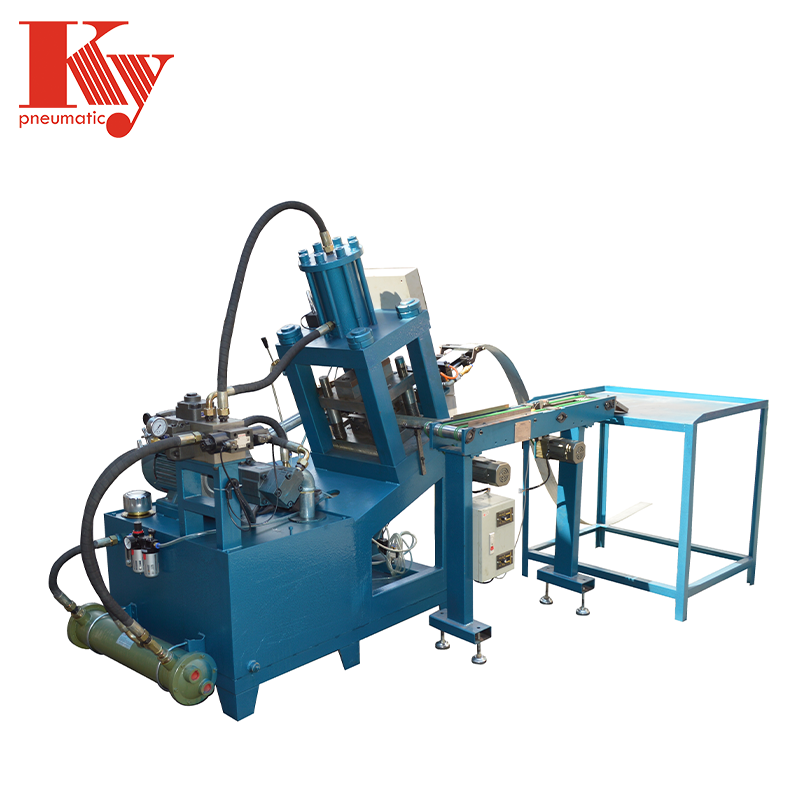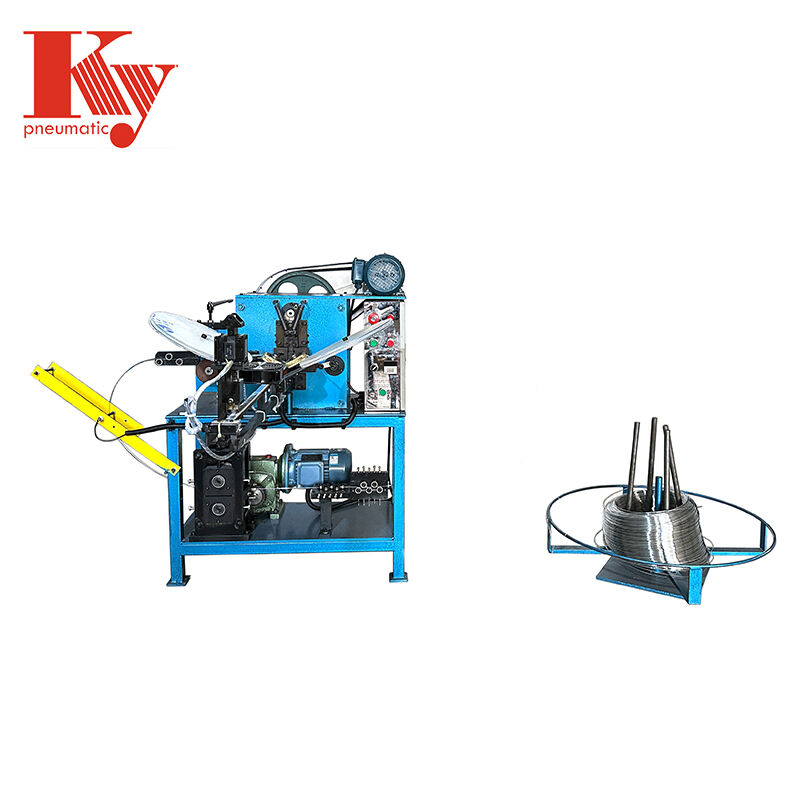Material selection of staples: from low carbon steel to high carbon steel
Understanding Material Selection for Staples: Low Carbon vs High Carbon Steel
Material selection is a critical aspect of the manufacturing process, especially for producing staples used in diverse applications. Choosing the right material ensures that the final product meets performance expectations, boasts longevity, and is suitable for its intended use. For staples, material selection involves assessing factors like mechanical properties and cost-efficiency, which directly impact the product's reliability and functionality.
Carbon steel is a prevalent choice for staples due to its diverse properties. Low carbon steel, known for its formability, is used in applications requiring extensive shaping without heat treatment. Its cost-effectiveness and ease of forming make it ideal for producing staples that need to be bent or drawn into shape. In contrast, high carbon steel offers enhanced strength and hardness, making it suitable for more demanding applications where durability and wear resistance are crucial.
Understanding the differences between low carbon and high carbon steel allows manufacturers to produce staples best suited for various tasks, from everyday office use to industrial applications requiring robust performance.
Low Carbon Steel: Characteristics and Applications
Low carbon steel is distinguished by its low strength, good ductility, machinability, and weldability. Defined by its carbon content, which is less than 0.25%, low carbon steel showcases exceptional formability and is a staple in numerous industrial applications. According to industry standards like ASTM A36, low carbon steel is highly adaptable, making it suitable for parts that do not undergo heat treatment. Its mechanical properties are influenced by factors such as initial tempering, part geometry, and the amount of cold work applied during forming processes. This makes it an ideal choice for fabrication methods requiring extensive shape alteration.
In staple manufacturing, low carbon steel serves multiple purposes effectively. Its properties, such as easy machinability and excellent formability, make it particularly suitable for creating products like staple pins and wires. The material's adaptiveness aids in wire drawing, where steel wires are reduced in diameter and increased in length by being pulled through a series of dies—a fundamental process in the fabrication of "staple machines" or staple pin making equipment. Besides this, low carbon steel's ability to endure bending without breaking down is crucial for producing staple pins, which require durability and resilience. By selecting low carbon steel for these applications, manufacturers ensure that the final products possess the necessary balance of strength and flexibility for everyday use.
High Carbon Steel: Strength and Durability
High carbon steel is renowned for its impressive properties, including increased hardness, tensile strength, and wear resistance compared to low carbon steel. According to industry standards such as those defined by the American Iron and Steel Institute (AISI), high carbon steels typically contain between 0.6% and 1% carbon content. This elevated carbon content allows the steel to undergo heat treatment processes, resulting in superior hardness and durability. Furthermore, high carbon steel demonstrates exceptional wear resistance, which makes it the material of choice for numerous specialized applications where extended lifespan and reliability are critical.
The unique properties of high carbon steel make it suitable for various demanding uses, particularly in construction and manufacturing environments where load-bearing and resilience are essential. Common applications include the production of heavy-duty staples, cutting tools, springs, and high-end knives. Its ability to withstand high stress and impact without deformation makes high carbon steel an ideal selection for scenarios requiring both strength and durability. Additionally, its robustness is frequently utilized in construction for creating load-bearing components and specialized equipment designed to perform under challenging conditions.
Comparative Analysis: Low Carbon vs High Carbon Steel
Understanding the differences between low and high carbon steel can greatly influence material selection in staple manufacturing. Here's a structured comparison of their mechanical properties.
Yield Strength
Low Carbon Steel: Typically ranges from 300-500 MPa.
High Carbon Steel: Usually exceeds 600 MPa, providing superior load-bearing capacity.
Elongation
Low Carbon Steel: Possesses higher elongation around 15-25%, indicating better ductility.
High Carbon Steel: Has reduced elongation of about 5-10%, making it less ductile but more rigid.
Hardness
Low Carbon Steel: Softer with a hardness level that allows for easy machining and forming.
High Carbon Steel: Much harder, which enhances durability and wear resistance.
Each type of steel displays varying strengths suitable for different manufacturing uses.
When it comes to selecting steel for staple manufacturing, several factors are crucial. Low carbon steel is ideal for high-volume production, where ease of forming and cost-efficiency are priorities. Its ability to withstand extensive bending and shaping makes it suitable for processes like wire drawing, forming, and welding, commonly needed in staple and pin making machines. It's also better suited to environments with less stress and wear exposure, preventing premature failure in staple applications.
On the other hand, high carbon steel is preferable for producing heavy-duty staples where enhanced strength and hardness are required. It is less suited to environments that demand high flexibility as its brittleness might lead to fracture under excessive deformation. Nonetheless, its excellent tensile strength and wear resistance make it the go-to option for staples exposed to high-pressure situations or those needing robust mechanical stability. Choosing the right type depends heavily on environmental conditions and production demands.
The Role of Technology in Staple Production
Technological advancements in staple making machines have significantly enhanced production efficiency and reduced material wastage. For instance, the Fine Wire Staple Making Machine utilizes a high-pressure oil circuit and PLC-integrated control, ensuring reduced noise and low failure rates. This machine can automatically sort staples, reducing the need for manual intervention and cutting down production costs. Moreover, it replaces traditional heavy punch presses with a hydraulic system, offering safe and stable operation with increased speed.
Advanced machines like the HR22 D Ring Staple Machine and the Highly Automated Staple Production Line have revolutionized the manufacturing landscape. The HR22 machine operates with low noise and high stability, ideal for industries like pet cages and furniture. It features an automatic counter and straightening device, ensuring precise and consistent staple production. The Highly Automated Staple Production Line utilizes electromagnetic heating, enhancing safety and efficiency while reducing energy consumption by over 70%.
Servo feeding staple making machines play a crucial role in automating the feeding process, thereby increasing precision and reducing operational costs. With features like low power consumption and stable feeding lengths, these machines ensure consistent product quality. The integration of a touch-screen interface allows for easy adjustments, enhancing accuracy and user-friendliness. These technological improvements lead to significant cost savings, reduced labor needs, and enhanced production capabilities across staple manufacturing processes.

 EN
EN
 AR
AR
 BG
BG
 CS
CS
 FI
FI
 FR
FR
 DE
DE
 EL
EL
 HI
HI
 IT
IT
 JA
JA
 KO
KO
 PL
PL
 PT
PT
 RU
RU
 ES
ES
 TL
TL
 ID
ID
 LT
LT
 SR
SR
 UK
UK
 VI
VI
 SQ
SQ
 GL
GL
 HU
HU
 MT
MT
 TH
TH
 TR
TR
 AF
AF
 MS
MS
 AZ
AZ
 KA
KA
 BN
BN
 LO
LO
 LA
LA
 MI
MI
 MN
MN
 NE
NE
 KK
KK
 UZ
UZ


